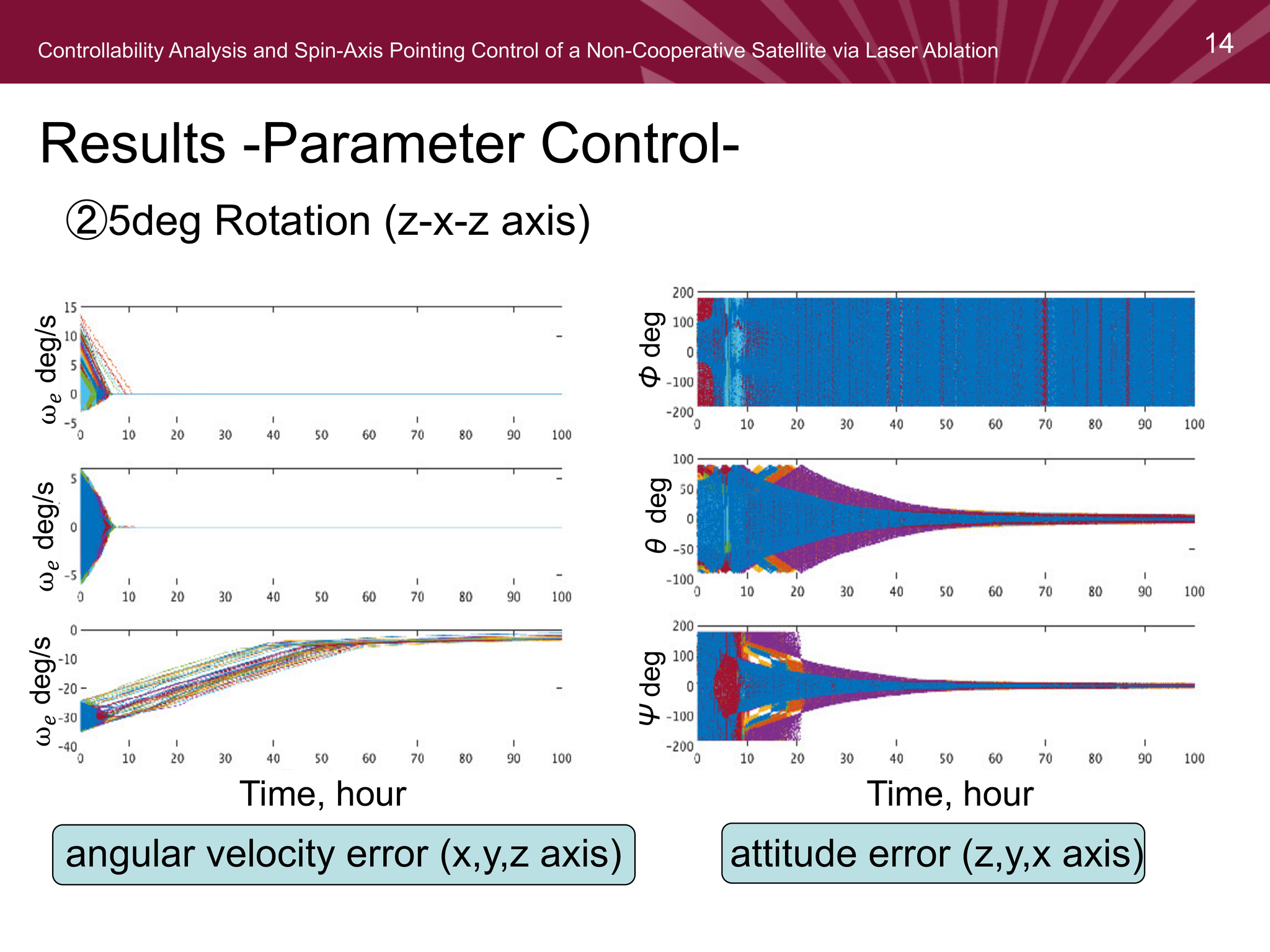research introduction: Controllability Analysis and Spin-Axis Control of a Non-Cooperative Satellite via Laser Ablation
日本語字幕有り
- Yui Kawano, Yasuhiro Yoshimura, Toshiya Hanada, Tadanori Fukushima, Aditya Baraskar, Yuki Itaya, Tomoaki Fujihara, Controllability analysis and spin-axis pointing control of a non-cooperative satellite via laser ablation
宇宙ごみ除去のための新しい方法として、レーザー照射で物体の表面を蒸発させ、その反力で推力を得る「レーザーアブレーション」が注目されています。本研究では、この技術を用いて非協力衛星(制御できない衛星)の姿勢を制御する方法を提案しています。レーザーによる推力は照射面の法線方向にしか働かないため、姿勢制御が難しいという問題があります。そこで、研究では数理解析によりこの方法の可制御性を確認し、スピン軸を任意の方向へ向ける制御則を提案しました。シミュレーションの結果、提案手法は初期条件が異なっても安定した姿勢制御が可能であり、重力傾斜トルクなどの外乱に対しても有効であることが示されました。燃料を使わずにデブリ除去を行える実用的な制御技術として期待されています。
"Laser ablation," a method that obtains thrust from the reaction force of evaporating an object's surface through laser irradiation, is attracting attention as a new approach for space debris removal. This research proposes a method for controlling the attitude of non-cooperative satellites (satellites that cannot be controlled) using this technology. There is a challenge in attitude control because the thrust from the laser only acts in the normal direction of the irradiated surface. Therefore, the research confirmed the controllability of this method through mathematical analysis and proposed a control law to point the spin axis in an arbitrary direction. Simulation results demonstrated that the proposed method enables stable attitude control even with different initial conditions and is effective against disturbances such as gravity gradient torque. This technology is expected to serve as a practical control technique for debris removal without using fuel.
